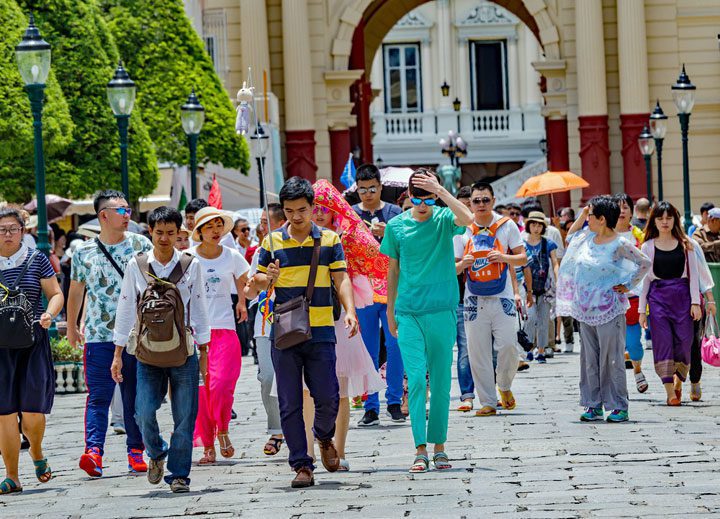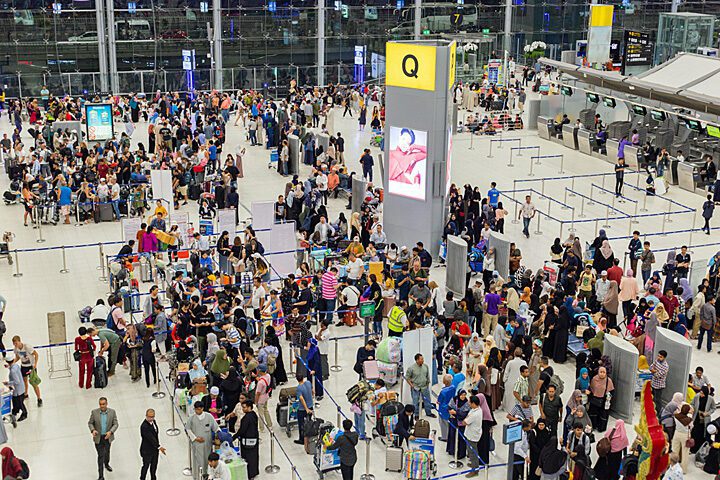Discover Thailand (14): Tourism

Thailand is a popular destination for tourists from around the world. The country offers a rich and diverse cultural experience, with beautiful temples, delicious food and breathtaking landscapes. Tourism is an important source of income for Thailand and has a major impact on the country's economy and society.
Millions of people visit Thailand every year to enjoy the country's rich culture and natural beauty. The number of tourists visiting Thailand can vary from year to year depending on various factors such as weather, political situation and economic conditions. According to figures from the Ministry of Tourism and Sports of Thailand, more than 2020 million foreign tourists visited Thailand in 2022 and 10. This is a decrease from previous years due to the COVID-19 pandemic. In 2019, approximately 39,8 million foreign tourists visited Thailand.
Tourism is important to the economy
Foreign tourists are good for Thailand's economy. According to the World Travel and Tourism Council (WTTC), the total economic contribution of tourism to Thailand in 2021 was about 6,5% of the country's gross domestic product (GDP). The WTTC also estimated that tourism will account for approximately 2021% of Thailand's total employment by 23. Tourism is therefore very important for Thailand. It is an important source of income for the country and has made a significant contribution to Thailand's economic growth. According to data from Thailand's Ministry of Tourism and Sports, the value of Thailand's tourism industry in 2020 was about 1,9 trillion baht, representing about 5,9% of the country's gross domestic product. Tourism also provides employment in Thailand, with approximately 8,1 million people employed directly or indirectly in the tourism industry.
Forecast for 2023: 18 million foreign tourists
For 2023, Thailand expects 18 million foreign tourists, which is still far from the pre-Covid level with almost 40 million international visitors. Whether this is achieved depends on a number of circumstances, such as the number of flights available, the prices of flights and accommodation, the security in the country, the state of the tourism infrastructure and the general economic conditions in the country and source countries of the tourists. For example, Thailand is quite dependent on China and other Asian countries when it comes to large numbers of tourists.
Bangkok and tropical islands
Most tourists visit the capital, Bangkok, where they can enjoy the vibrant atmosphere, fascinating temples and extensive shopping and dining options. There are also many historical and cultural attractions in Bangkok, such as the Grand Palace and the Temple of the Emerald Buddha. But the historic cities in the north, such as Chiang Mai, are also popular. The city is known for its beautiful temples, including the Wat Phra That Doi Suthep, and is also a popular starting point for trekking to the surrounding mountains and hill tribe villages.
Other popular destinations are the tropical islands in the south of the country, such as Phuket and Koh Samui. Thailand's beaches are also a big draw for tourists. There are many beautiful beaches along the coast of the country, providing a great place to relax and enjoy the warm weather and azure blue sea. Thailand also has a lot to offer for adventurous tourists. Numerous outdoor activities are available, including rafting and kayaking on the rivers, rock climbing and ziplining in the mountains, and scuba diving and snorkeling off the coast. These activities provide a great way to explore the country and enjoy Thailand's beautiful nature.
Thailand is famous for a vibrant nightlife with many bars, clubs, restaurants and other entertainment options. The capital city of Bangkok is best known for its vibrant nightlife, with numerous bars and clubs open late into the night. Other cities in Thailand, such as Pattaya and Phuket, also have an extensive range of nightlife. There are also several night markets and street vendors selling their wares in the evening. Nightlife in Thailand is generally cheap and there is a wide variety of options available, from formal and chic to casual and laid-back.

eakkachai halang / Shutterstock.com
Good infrastructure and transport options
In addition to the beautiful beaches, islands, historic places, delicious food, a rich culture and a great climate. Is the infrastructure in Thailand excellent for domestic travel or exploring the cities. There are different transport options for tourists in Thailand, depending on where you are and how far you want to travel. Below are a few options:
- Plane: There are several airports in Thailand, including Suvarnabhumi International Airport in Bangkok, which has connections to cities around the world. Domestic flights are also available between different cities in Thailand.
- Train: Thailand has a well-developed rail network that connects the main cities in the country, such as Bangkok, Chiang Mai, Ayutthaya and Surat Thani.
- Bus: There are many bus services available between cities in Thailand, and they often offer a cheaper option than the train. There are also special tourist buses that offer more comfortable travel at a higher fare.
- Tuk-tuk: These small, open motor vehicles are a popular way to travel short distances in Thailand's cities. It is wise to agree on the price in advance to avoid unpleasant surprises.
- Taxi: There are many taxi companies in Thailand, with both meter taxis and flat-rate taxis available.
- Bike: In some cities in Thailand, such as Chiang Mai, renting a bicycle is a popular way to explore the area. Keep in mind that traffic in Thailand can be chaotic at times and wearing a helmet is mandatory.
- Boat: In some parts of Thailand, such as near the islands in the Gulf of Thailand and the Andaman Sea, boat trips are a popular way to explore the area. Various types of boats are available, from small longtail boats to large catamarans.

Challenges
Tourism in Thailand not only has a positive impact on the economy, but also on the local population. It creates jobs in the tourism industry and provides income for the local population. Tourism has also led to the development of infrastructure, such as roads, hotels and airports, which facilitate access to different parts of the country. However, there are also challenges associated with tourism in Thailand. The large number of tourists can lead to overfishing and environmental pollution. For example, Thailand has difficulty with the processing of waste. There are also concerns about preserving the country's cultural identity, as tourism can lead to assimilation pressures and the loss of traditional cultural expressions.
To address these challenges, the Thai government has made efforts to support sustainable tourism. This includes promoting ecotourism and supporting local communities involved in the tourism industry. There are also efforts to regulate and manage tourism to ensure it is sustainable and preserves the country's natural and cultural wealth.

